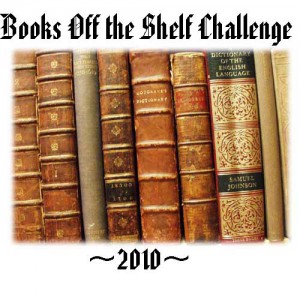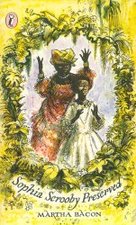Review: ‘Sophia Scrooby Preserved’ by Martha Bacon

 Title: Sophia Scrooby Preserved
Title: Sophia Scrooby Preserved
Author: Martha Bacon
Published: Puffin Books, 1971, pp. 220
Genre: Children’s historical fiction
Blurb: ‘My little panther’, Nono’s father called her, but he didn’t get the chance to say it for long. Her African village was destroyed and she first lived in the bush then was sold as a slave, given a name and a home and then — horrifyingly — sold once more into the hands of pirates. A rich, exciting story about a fascinating and thoroughly believeable character.
When, where and why: I have a nasty feeling that I bought this book when I was the correct age for the target audience, which would make it at least thirteen years old. It has languished on my shelves ever since, so it definitely qualifies for my Books Off the Shelf Challenge. I was prompted to read it now by a challege in which I am participating on Goodreads, one of the criteria of which is to read a young adult book.
What I thought: Some children’s books are so delightful and charming that I love them just as much now as I did when I first read them so many years ago. They have vivid, engaging characters and absorbing stories which draw me in time and time again. Particular favourites are the wonderful stories of E. Nesbitt: The Railway Children and Five Children and It and the subsequent books. Reading Sophia Scrooby Preserved, I got the feeling that I would have really enjoyed it when I was eight or so, but it lacked the elusive magic necessary to translate into a book which I could still enjoy as someone in their twenties.
However, I do think it would be rather unfair to judge this book from my adult perspective when I’m clearly no longer the target audience, as this has all the elements which make for a good, if not great, children’s book. It has a likeable and resourceful heroine in Pansy, as Sophia Scrooby is known, and a series of suitably far-fetched but exciting adventures for her to undertake. It has danger, magic, and history. It has so many of these things that at times they can feel a bit rushed. Nono (as the heroine is initially known) sees her village being destroyed by Zulus, goes to live with a herd of impalas, then journeys to the coast and is sold as a slave without pausing for breath or reflection. As a child, I would probably have found this fast-paced and exciting, but reading the book now I wanted more detail and development.
I thought the pictures throughout the book were a lovely accompaniment to a sweet story, and I would recommend this book as a good historical adventure for readers aged between eight and ten. For me now it was a quick, simple, enjoyable read, but not worth revisiting.
Where this book goes: This book is going off to BookMooch to look for a new home. It wasn’t bad (my usual reason for getting rid of books) but there’s no way I’m ever going to reread this or want to lend it to anyone and as I’m not likely to be spawning for many years it’s definitely not worth hanging onto for future generations to read. It will be good to clear some room on my shelves.
Tea talk: I read this book while sipping some lovely golden Darjeeling. First flush is just starting to be available in the shops now and I’m taking full advantage of that.